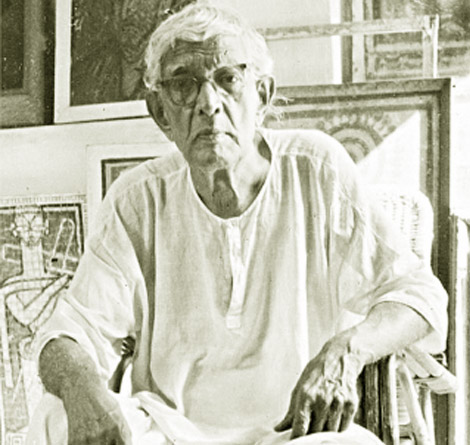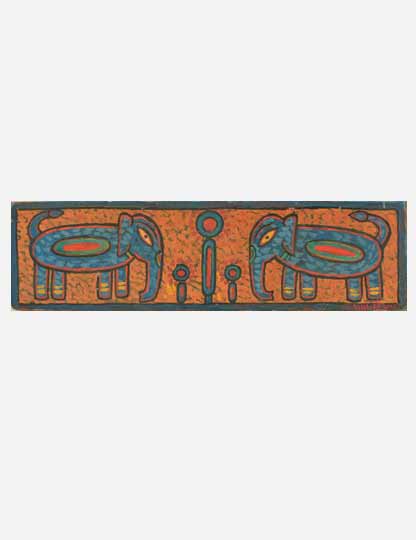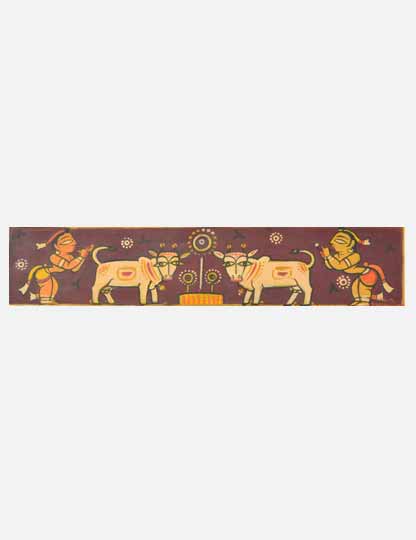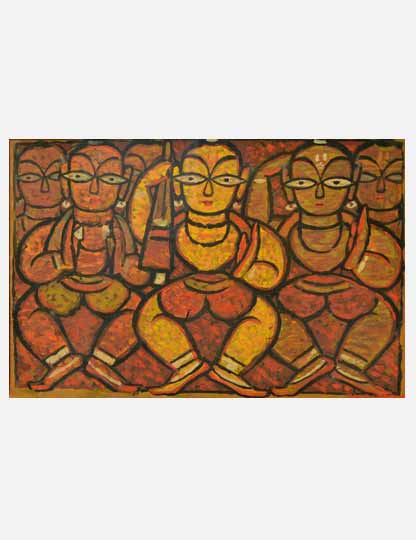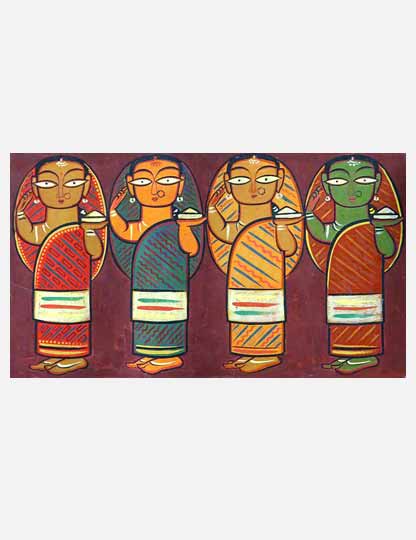Jamini Roy
One of the most iconic figures of modern art, Jamini Roy, was born in 1887 in Beliatore village in the Bankura district of West Bengal. At the age of 16, he left his village and enrolled in the Government College of Arts and Crafts, Calcutta. He studied arts under the guidance of Abanindranath Tagore. He received his diploma in fine arts. He wanted to keep people close to their folk heritage through his artworks.
Despite having training in western art, Roy went on to create his own style of fusing traditional and western art. His style and paintings created their own peculiarity be it the choice of material or the surface of his paintings. His rhythmic use of brushstroke and depiction of elaborate scenes were highly appealing to the eyes.
He began with painting landscapes and portraits and later on, his childhood in his village in Bengal became the basis of his paintings. He captured the Santhals tribe of Bengal which was the ultimate depiction of the natives and folk living. He did strong brush strokes fused with the Kalighat style in painting the tribal living. Roy was experimentative with his work and made a complete switch to indigenous material to express his artistic skills. He painted on cloth, mats and even wood coated with lime. He also experimented with materials extracted from natural colours and pigments derived from mud, chalk powder, and flowers rejecting European paints and style. This left a distinctive mark in the history of Indian Modern Art. He painted around several religious themes. Some of his most iconic works are Ramayana, Dual Cats with one Crayfish, Bride and two Companions, Crucifixion with Attendant Angels, Krishna and Balarama, Santal Boy with Drum, Krishna and Radha Series, Makara, St. Ann, and the Blessed Virgin, Seated Woman in Sari. With this dedication of presenting the native and simplified lives of humans living in Bengal, his name became synonymous in modern Indian art history with a reinvented "Bengali folk" style.
He held several solo exhibitions and numerous group shows. Today, Roy’s works can be found in the collections of the Victoria and Albert Museum in London, the Harn Museum of Art at the University of Florida, and the National Gallery of Modern Art in New Delhi, among others. He was awarded Viceroy's Gold Medal (1934) and Padma Bhushan (1954). Jamini Roy died on 24 April 1972 in Kolkata, where he had lived all his life.
In 1976, the Archaeological Survey of India, Ministry of Culture, Govt. of India declared his works among the "Nine Masters" whose work, to be henceforth considered as " art treasures, having regard to their artistic and aesthetic value".
